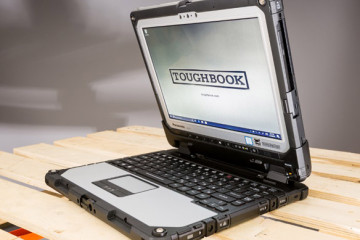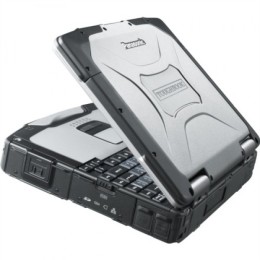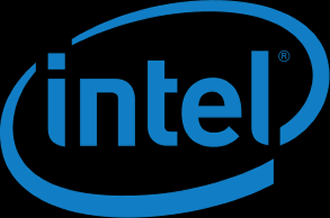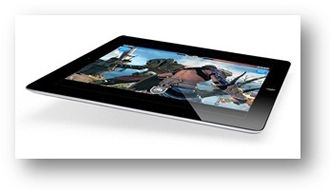 Panasonic has snapped up digital fulfilment platform outfit Blue Yonder.
Panasonic has snapped up digital fulfilment platform outfit Blue Yonder.
The move will mix Panasonic’s strength in industrial engineering, IoT and edge technologies with Blue Yonder’s AI/ML-driven supply chain and commerce solutions
Tag: Panasonic
Panasonic partners with three major kiddie charities
 Panasonic has announced partnerships with three major charities in Europe to provide refurbished laptops and tablets to socially disadvantaged families. The programme is focused on enabling children to have access to the full benefits of eLearning in the current COVID-19 climate.
Panasonic has announced partnerships with three major charities in Europe to provide refurbished laptops and tablets to socially disadvantaged families. The programme is focused on enabling children to have access to the full benefits of eLearning in the current COVID-19 climate.
In the UK, the equipment will be used in Sheffield and Northern Ireland.
Save the Children in the UK, Apprentis D’Auteuil in France and Die Arche Kinder Projekt in Germany will receive 100 refurbished semi-rugged laptops and handheld devices during a two-year period – starting with 30 now. The equipment can be easily sanitised and shared amongst multiple families via a ‘library’ system. The first delivery of devices to the charities will have a total value of €50,000.
Chris Turner appointed Toughbook UK and Ireland Country Manager
 Panasonic has announced the appointment of Chris Turner as the new Country Manager for the UK & Ireland Toughbook Group. #
Panasonic has announced the appointment of Chris Turner as the new Country Manager for the UK & Ireland Toughbook Group. #
Turner has more than a decade’s experience at Panasonic flogging Toughbook ’s rugged notebooks, tablets and handheld devices. His focus will be to boost the sale of rugged notebooks and tablets in the UK and Ireland, rapidly grow Panasonic’s share of the handheld market and accelerate its focus from hardware to mobile business.
76 percent of buyers want hardware on a subscription
 The idea of hardware as a service has [surely Haas, Ed.] gained traction among the punters, according to Panasonic.
The idea of hardware as a service has [surely Haas, Ed.] gained traction among the punters, according to Panasonic.
Panasonic has been adding up some numbers and worked out that more than 76 percent of technology buyers were keen to buy hardware on a subscription basis, with cost their crucial consideration.
The outfit found that increasing number of customers have heard about the option and wanted to use it for laptops, tablets and handhelds. The attraction of the
Panasonic wants more rugged tablet partners
 Panasonic is still looking for more partners to join its Edge channel programme after recruiting 60 partners to sell its Toughbook tablet across Europe.
Panasonic is still looking for more partners to join its Edge channel programme after recruiting 60 partners to sell its Toughbook tablet across Europe.
The company set up the programme to snatch a share of the rugged handheld market from Honeywell, Datalogic and Zebra.
Panasonic’s handheld gear makes up a third of Panasonic’s rugged mobile device range sales, and make it shedloads of cash as the sector demand has been growing.
It is particularly interested in the transportation and logistics, retail and manufacturing industries and as such, is looking for partners specialising in the field service, supply chain and proof of delivery verticals.
Panasonic’s handheld channel programme offers dedicated marketing, sales and technical support and attractive incentives for businesses that meet its qualification criteria.
Panasonic Toughbook sales director Steven Vindevogel said that new resellers need a history in the delivery of value-added, rugged handheld solutions covering hardware, software and services.
“As the new partners agree and then achieve sales targets they will be promoted through the three-tier channel programme.”
The outfit said that it would work closely with its new distributor Scansource to find and enrol them into the Edge programme.
Panasonic is the king of rugged laptops
 Panasonic is Europe’s leading rugged mobile computing manufacturer, according to the latest market analysis from VDC Research.
Panasonic is Europe’s leading rugged mobile computing manufacturer, according to the latest market analysis from VDC Research.
The beancounters, after adding up some numbers and dividing by their shoe size, said that with the Panasonic Toughbook range, the company extended its market-leading share of the European rugged notebook market with a 67 percent revenue share of sales in 2016.
The Panasonic Toughpad tablet range continued to lead the rugged tablet market with a 56 percent revenue share of sales and the company’s expansion into the rugged handheld market accelerated with year-on-year growth of 176 percent.
Kevin Jones, managing director Panasonic computer products solutions Europe said that despite a decline in the wider business notebook market, the rugged notebook market has remained buoyant as devices continue to be an important tool for many mobile workers with the need for data entry using a keyboard.
“Our focus on updating and refreshing our most successful rugged notebook models, combined with bringing to market new two-in-one detachable rugged devices has allowed us to expand our market share even further.”
In the rugged tablet market, Panasonic continued to lead with 56 percent revenue share of sales, almost eight times that of its nearest competitor.
Panasonic’s focus on the European rugged handheld market is also paying dividends. With almost a third of its product range now dedicated to this market, Panasonic has seen year-on-year growth of 176 percent in this sector as devices such as the Panasonic Toughpad FZ-F1 & FZ-N1 handheld tablets with their angled rear barcode reader to protect against repetitive strain and enhance user productivity begin to establish a reputation in industries such as transportation and logistics, retail and manufacturing.
David Krebs, EVP at VDC Research, said: “With over 67 percent market share in the rugged notebook and over 56 percent market share in the rugged tablet market in EMEA in 2016, Panasonic continues to set the standard against which its competitors are measured. Moreover, with the introduction of the world’s first two in one fully rugged notebook Panasonic and an expanded portfolio of rugged handheld devices Panasonic is delivering some of the most innovative products in the rugged mobile computing market.”
Motorola discovers US does not rule the world
 It appears that Motorola’s US court case against several Asian suppliers for alleged price fixing is coming unstuck.
It appears that Motorola’s US court case against several Asian suppliers for alleged price fixing is coming unstuck.
A US appeals court appeared sceptical of mobile phone maker Motorola Mobility’s attempt to sue AU Optronics, Chunghwa Picture Tubes, HannStar Display, LG Display, Samsung, Samsung, Panasonic, Sanyo, Sharp and Toshiba.
A three judge panel of the 7th US Circuit Court of Appeals questioned whether the allegations had enough connection to the United States to be heard in US courts.
Motorola Mobility is now a unit of China’s Lenovo Group, but it sued the suppliers in Chicago federal court in 2009, saying some of its subsidiaries had overpaid for liquid crystal display screens because of a conspiracy in Asia. Some screens entered the US market, the lawsuit said.
Judge Richard Posner, a member of the appeals panel, pointed out that Motorola treated the foreign subsidiaries as separate for tax reasons, but for antitrust purposes, they are seen as part of Motorola.
Motorola Mobility lawyer Thomas Goldstein said the company should be able to sue under US law because a former Chicago-based parent negotiated its supply contracts.
Lenovo bought Motorola Mobility in October for $2.91 billion from Google which had bought it in 2012. Motorola Mobility says it paid the LCD makers more than $5 billion from 1996 to 2006.
The appeals court ruled against Motorola Mobility in March but agreed to hear the case again after the Obama administration said the ruling threatened its ability to prosecute global price fixing.
The US Justice Department, whose investigation of global LCD price-fixing led to more than $1.3 billion in criminal fines, asked the court to find that the conspiracy directly affected US commerce.
Belgium and Japan filed briefs criticising the reach of US antitrust law and urging the court to rule for the suppliers.
Nokia buys a bit of Panasonic
 The bit of Nokia, which is not busy merging with Microsoft, has just written a cheque for a slice of Panasonic’s electronics business.
The bit of Nokia, which is not busy merging with Microsoft, has just written a cheque for a slice of Panasonic’s electronics business.
The former rubber boot maker, which sold off its phone unit said it will buy Panasonic’s mobile phone wireless base station system business for operators as well as related wireless equipment system business.
No one is saying how much Nokia paid for it but the company expects to have completed the transaction by early 2015.
Nokia made 5.5 billion euros when it sold its phone division to Microsoft three months ago. Meanwhile Nokia has been buying up other businesses such as the Chicago-based SAC Wireless.
Japan is one of the new Nokia’s most important mobile network market areas and it controls a quarter of the Japanese market. This acquisition will bring that up to about one third.
Rauhala suggests that while this is not a “giant deal”, it is probably worth tens of millions of euros.
Panasonic is short of cash at the moment and needs the readies.
Intel scores Panasonic fab contract
 The sales teams at Chipzilla have opened the champers after scoring a key contract with Panasonic.
The sales teams at Chipzilla have opened the champers after scoring a key contract with Panasonic.
Intel chips will now be under the bonnect of Panasonic’s upcoming TVs, stereos and other audiovisual gear.
Intel signed an agreement with Panasonic to make next-generation system-on-chips to process audio and video. The chips will be made using Intel’s 14-nanometer process.
Under the plan Chipzilla will work with Panasonic’s System LSI division, which makes video encoding/decoding and chips for TVs, Blu-ray players, set-top boxes and other products.
It seems that Panasonic will design the chips, which will then be sent to Intel’s fabrication plants for manufacturing. The Panasonic SOCs will be based around 3D transistors.
Intel said that adding a high-profile customer like Panasonic will enhance the visibility of Intel’s fledgling chip manufacturing operations.
The company has been slowly expanding its custom-chip business, opening up its factories to external companies as a way of making back some of the costs of upgrading factories.
Tablet failures slow BYOD growth
 A report claimed that nearly half people using tablets have experienced failure in the last two years, making them a poor choice as devices in the business sector.
A report claimed that nearly half people using tablets have experienced failure in the last two years, making them a poor choice as devices in the business sector.
The survey was undertaken by Panasonic which – it is only fair to say – has an axe to grind because it is pushing its Toughbook range of tablets.
The survey showed that the most common weakest link was extreme temperatures, whether machines were left in places too hot or too cold.
The next common reason for failure was machines being dropped or knocked off desks – that was followed by spillages. Panasonic claimed one in 10 reported that a vehicle drove over their broken tablets.
Battery problems, touchscreen bugs and screen breakages were also named as reasons for tablets not working – with the average time for repair being two weeks.
The survey showed that tablets are often used wen employees were travelling but 45 percent used it at their desk or in front of clients.
Panasonic didn’t say how many people it had surveyed.
Panasonic announces job cuts
 Panasonic has announced that 5,000 of its staff will be axed over the next three years.
Panasonic has announced that 5,000 of its staff will be axed over the next three years.
The Japanese company has said those in its automotive and industrial units will fall on Panasonic’s sword as the company scales back its operations and tries to recoup huge annual losses of $7.5 billion, announced in March.
According to Channel News Asia, the company, which has already cut 20 percent of its workers will now move to slash its staff of around 111,000 people by March 2016. The move is part of an overall strategy to recover its business after a flagging year.
In March, rumours circulated that the company would further salvage its business by cutting its plasma business over the next three years.
It is thought Panasonic’s TV business, which generated sales of $10.5 billion during its peak in 2009 and 2010, accumulated less than half of that amount in 2015 and 2016.
It announced that it would end plasma TV panel production at its main plant in Amagaskai in western Japan around fiscal year 2014.





